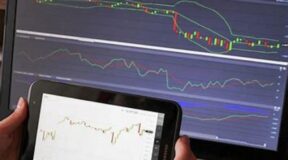
In the world of investing, demat accounts and trading accounts are two essential tools that investors use to participate in the stock market. While both serve different purposes, they work together to facilitate seamless trading and holding of securities. In this article, we will delve into the differences between demat accounts and trading accounts, understanding their individual functions, features, and how they complement each other. By clarifying these distinctions, investors can gain a better understanding of these accounts and make informed decisions when it comes to managing their investments.
Demat Account: Holding Securities in Electronic Format
A demat account, short for dematerialized account, is an electronic platform that allows investors to hold securities in a paperless format. It eliminates the need for physical share certificates and provides a convenient and secure way to store and manage investments.
The key features and functions of a demat account include:
- Holding securities: A demat account holds various types of securities, including stocks, bonds, mutual funds, and exchange-traded funds (ETFs), in electronic form. It provides a centralized repository for all your investments.
- Electronic transactions: With a demat account, you can buy and sell securities electronically. It enables seamless transfer of securities between buyers and sellers, facilitating smooth and efficient trading.
- Safekeeping: A demat account ensures the safety of your investments by eliminating the risk of loss, theft, or damage associated with physical share certificates.
- Portfolio tracking: You can easily track and monitor your investment portfolio through your demat account. It provides access to real-time information on holdings, transaction history, and account statements.
Trading Account: Executing Buy and Sell Orders
A trading account, on the other hand, is specifically designed for executing buy and sell orders in the stock market. It acts as an intermediary between the investor and the stock exchange, facilitating the actual trading process.
The primary functions and features of a trading account include:
- Placing orders: A trading account allows you to place buy and sell orders for securities. You can specify the quantity, price, and other parameters for the desired transaction.
- Market access: Through a trading account, you gain direct access to the stock exchange. It enables you to participate in various market segments, such as equity, derivatives, commodities, and currencies.
- Order execution: Once you place an order through your trading account, it is routed to the stock exchange for execution. The trading account ensures timely and accurate execution of your orders.
- Order tracking: You can track the status of your orders, including their execution, pending orders, and order history. It provides transparency and visibility into your trading activities.
Demat Account and Trading Account: Complementary Roles
While demat accounts and trading accounts serve different purposes, they work hand in hand to facilitate seamless investing and trading.
The demat account and trading account are interconnected through the following process:
- Buying securities: When you buy securities through your trading account, the purchased securities are credited to your demat account. It ensures safe and efficient transfer of securities from the seller’s demat account to yours.
- Selling securities: When you sell securities from your demat account, you need to place a sell order through your trading account. The sold securities are debited from your demat account and transferred to the buyer’s demat account.
It is important to note that while a demat account is mandatory for holding securities, a trading account is not compulsory if you solely want to hold investments without actively trading. However, to execute buy and sell orders, a trading account is required.
Conclusion
In summary, demat accounts and trading accounts serve unique and separate functions within the realm of investing and trading. A demat account is primarily responsible for holding securities in electronic format, providing a secure and convenient platform for investors to manage their investments. On the other hand, a trading account facilitates the execution of buy and sell orders in the stock market, allowing investors to actively trade securities. Understanding the differences and complementary nature of these accounts is crucial for investors to effectively manage their portfolios and participate in the stock market with confidence. By utilizing both accounts appropriately, investors can navigate the financial markets and make informed decisions to achieve their investment objectives.If you are looking for seamless account setup, powerful trading platform, insightful research, advanced security measures, and exceptional customer support,open a demat and trading account with Enrichmoney.






